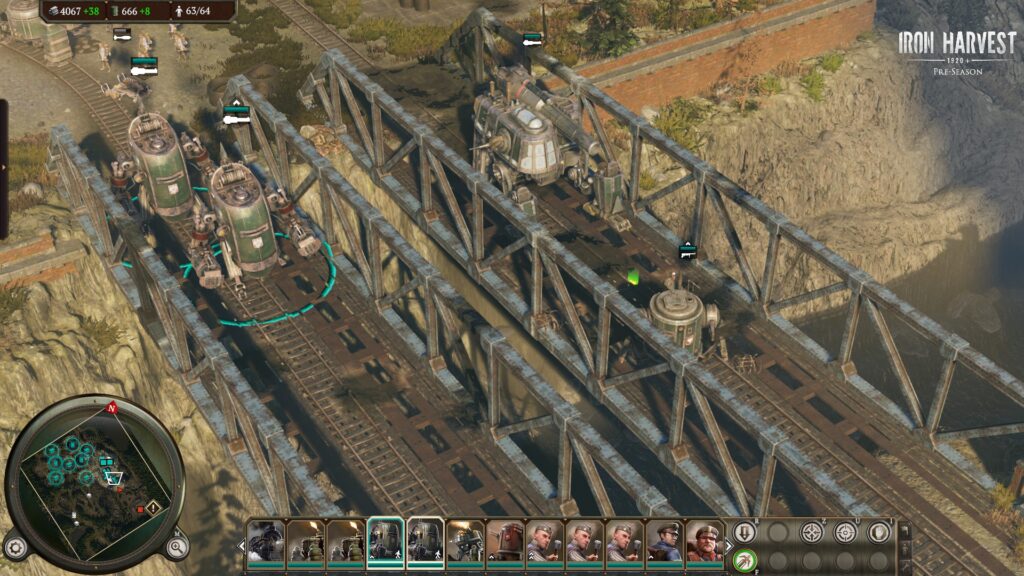
I did a preview for King Art’s upcoming RTS, Iron Harvest, back in June during the Steam Game Festival event. This demo was rather limited, and only contained a few skirmish and multiplayer maps with two of the game’s three factions.
The developers have since released a more complete beta build. Deep Silver sent us a preview with some campaign content- including early missions with the Saxony Empire. Here are my impressions after getting more time with a newer version of the game.
Since the campaign is the big new feature that has been added since the last demo, that is where I decided to focus most of my attention with the new build. Iron Harvest features three factions, each of which has their own campaign. I’ve now completed all of the Polania missions currently in the game, which seems to be roughly half of what the final campaign will consist of.
Iron Harvest is set in the alternate history universe of 1920+, a world that originated as a series of paintings by Polish artist Jakub Różalski. The popularity of his art eventually spawned Scythe, a wildly successful board game set in the same universe. The success of Scythe in turn led to Iron Harvest, a Company of Heroes-inspired RTS that was Kickstarted in early 2018.
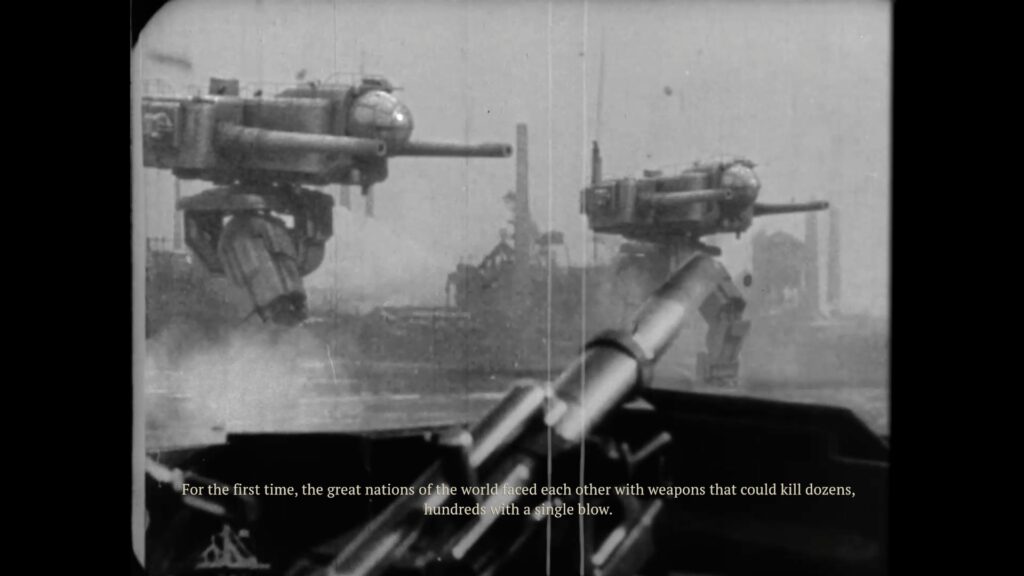
The world of 1920+ can best be summed up as WWI with dieselpunk mechs, and other retro-futuristic technologies. While there are other factions in the setting, Iron Harvest focuses primarily on Polania, Saxony, and Rusviet. Each campaign is played from the perspective of a particular hero character, each of which are accompanied by a powerful animal companion.
The story of Iron Harvest picks up five years after the first Great War that saw Automachines dominate the modern battlefields of Europe. The Polania campaign acts as the game’s tutorial, and follows Anna Kos and her pet bear Wojtek. They become reluctant heroes in the Polanian Resistance, after Anna’s village is attacked by the Rusviets.
As you can imagine, your hero units play a big role in the game’s campaign missions. Anna is a skilled marksmen who was trained to shoot by her brother before he was drafted into the Great War. She excels at plinking away at enemy infantry from afar, and can fire a piercing shot special ability that can hit multiple units.
Her brutal ursine companion follows her around, and can be ordered to charge ahead to tie up enemies in melee. Wojtek has a special attack of his own, which consists of a powerful swipe that knocks down enemy soldiers.
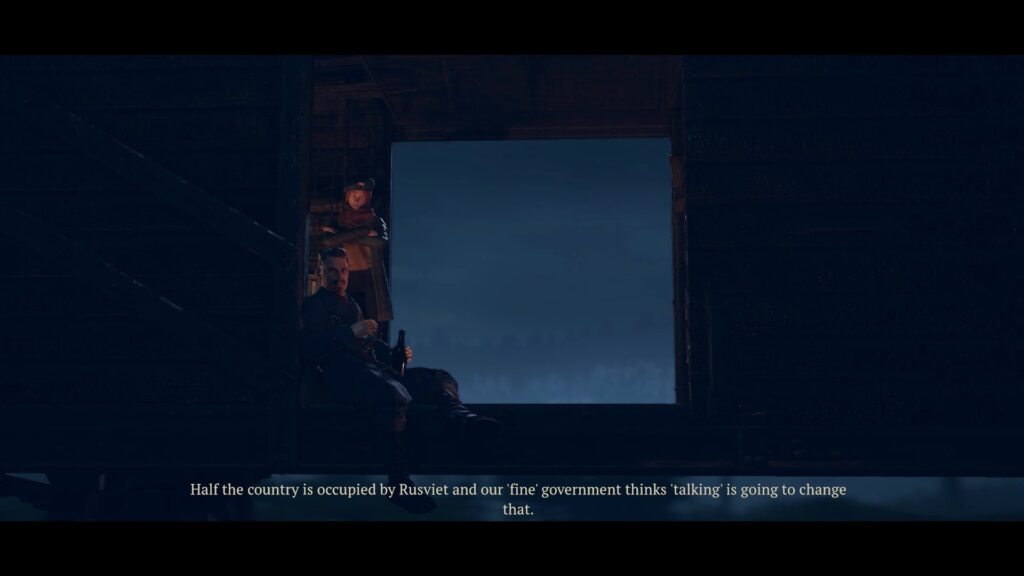
Polania’s other major hero unit in the campaign is Lech, Anna’s uncle and the leader of the Polanian Resistance in their guerrilla campaign against the Rusviet occupiers. Lech pilots a large, ramshackle mech that looks and moves a lot like a gorilla. Its massive arms are capable of dealing heavy damage to mechs, and can send infantry flying through the air with each swing. It’s also equipped with a short ranged grenade launcher.
The Polania campaign does a fairly good job of easing you into Iron Harvest‘s mechanics, and features a variety of interesting missions and objectives. As with many RTS campaigns, there are missions where you have to raise a base and army from scratch, and missions where you have to complete a series of objectives with a limited selection of troops.
The latter tend to emphasis the pick-ups scattered across each map, allowing you to heal troops with medical supplies, or swap out their equipment to something that better fits the role you currently need filled.
While the missions, story, and setting are interesting enough, I must admit that Iron Harvest‘s voice acting and writing can sometimes fall flat. This is a game with a fairly modest budget from a German developer, so some of the writing is a bit awkwardly worded. This problem is exacerbated by the voice acting, which definitely sounds like non-native English speakers trying to deliver English lines while impersonating Polish or Russian accents.
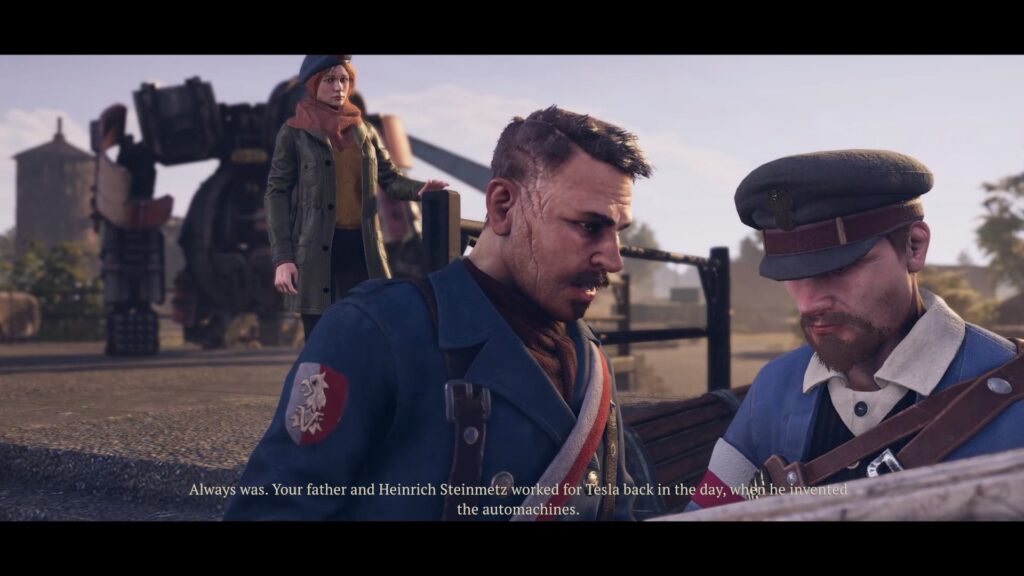
I haven’t talked too much about the actual gameplay of Iron Harvest because my opinion is still largely the same as how I felt in my first preview. Unfortunately, Iron Harvest is still very unpolished in a lot of places. One of my main complaints in the original preview was the unit pathfinding and AI. While these aspects of the game have improved a bit since the last demo, they are still pretty bad overall.
Units get stuck on terrain, and each other, quite a bit. At the same time, you’ll see a ton of examples of units just clipping right through obstacles. This is especially obvious on the Polania mission where you are escorting a train, which seems to just not physically exist sometimes as units pass right through it.
Infantry still has an annoying tendency to shoot a few volleys before charging into melee without any input from yourself. The enemy AI in particular loves to run their infantry across open ground to tie your units up in melee, resulting in long, drawn-out slugfests as troops smack each other with rifle butts instead of just shooting people.
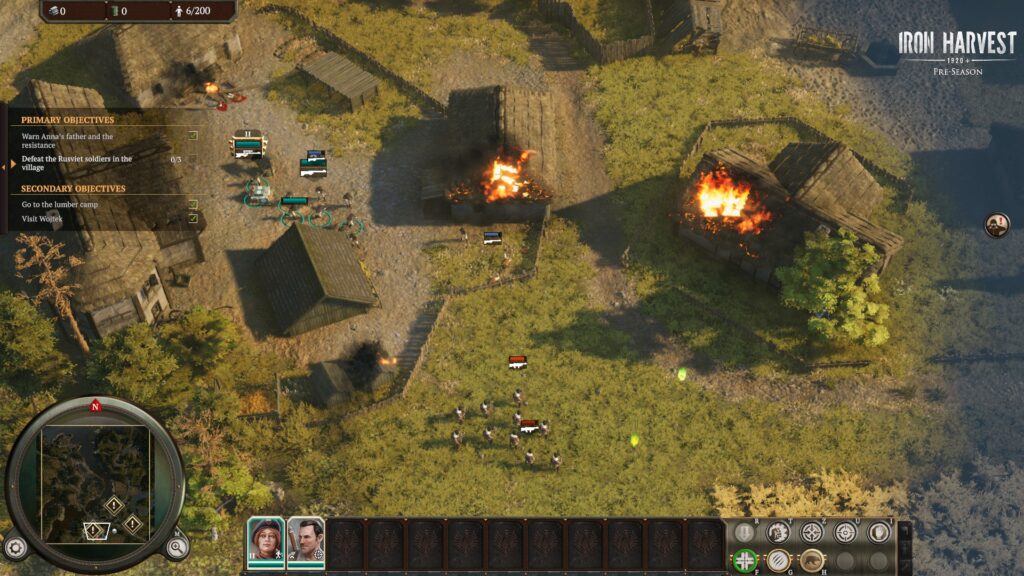
Balancing is also still pretty bad overall. While artillery like the big gun mounted on the train in the aforementioned Polania mission pack a punch, it just feels like the range is a bit too short.
There was one situation where I decided to use the train to shell some crewed anti-armor guns waiting in ambush, only to learn that they apparently have longer range than this massive field gun designed to lob shells at distant targets.
Blobbing is still a big problem in Iron Harvest. There aren’t any really effective anti-infantry weapons in the early portion of a game, so big blobs of infantry are pretty strong. In the late game, however, some mechs are just so strong that infantry seems a bit irrelevant.
While balance, AI, and pathfinding can all gradually be fixed, the core problem with Iron Harvest is that it is a very barebone game that lacks mechanical depth. This is probably why blobbing and spam is so effective, and why I don’t think it will ever truly be rooted out regardless of patches and balance tweaks.
There are very few active abilities in Iron Harvest, and the ones that do exist tend to have long cooldowns. Some units do have pretty decent abilities, but they are locked until the unit ranks up.
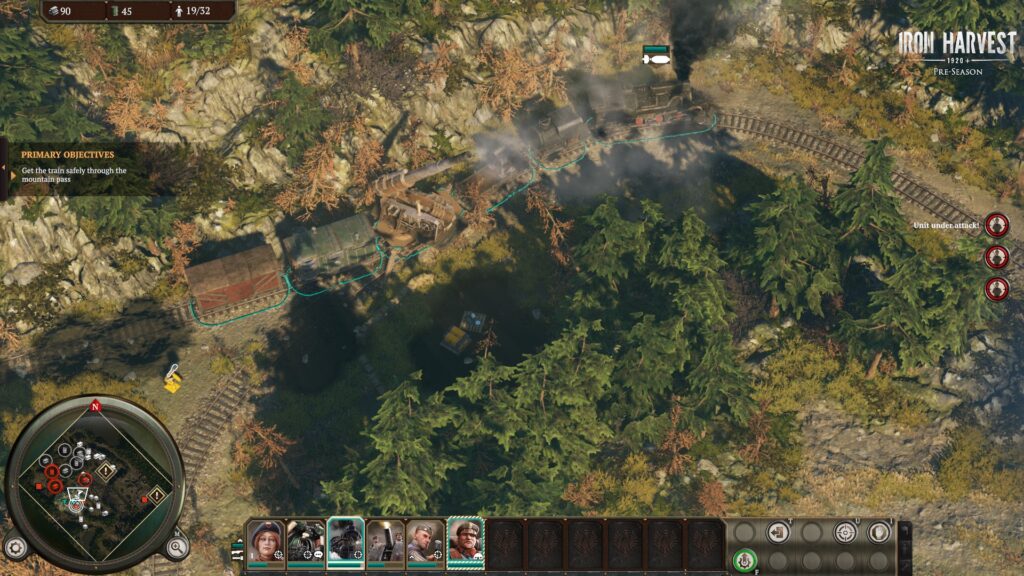
Besides the general lack of active abilities, Iron Harvest has no research or tech trees, and it barely has base building. There are three structures in the game, with a handful of defensive fortifications like sandbags, bunkers, and mines. Unlocking the “late game” units is just a matter of upgrading your barracks or workshop. Very little decision making goes into base management.
Performance isn’t particularly great either, and the game frequently drops into the 40s during larger battles. This is despite the fact that the game isn’t too visually impressive, with little in the way of flashy effects or destruction mechanics.
While the current beta version of Iron Harvest is marginally better than the previous demo, it has done little to truly sell me on the game. There are lots of issues, both large and small, that get in the way of enjoying it.
There are so many of these small issues that it’s hard to cram them all into a single preview. Despite all the issues, the game is only a week away from release, so I seriously doubt any of these problems will get resolved before launch.
Iron Harvest releases on September 1st for Windows PC (via GOG and Steam), PlayStation 4, and Xbox One. The game is currently holding a free open beta on Steam.
Iron Harvest was previewed on Windows PC using a preview copy provided by Deep Silver. You can find additional information about Niche Gamer’s review/ethics policy here.